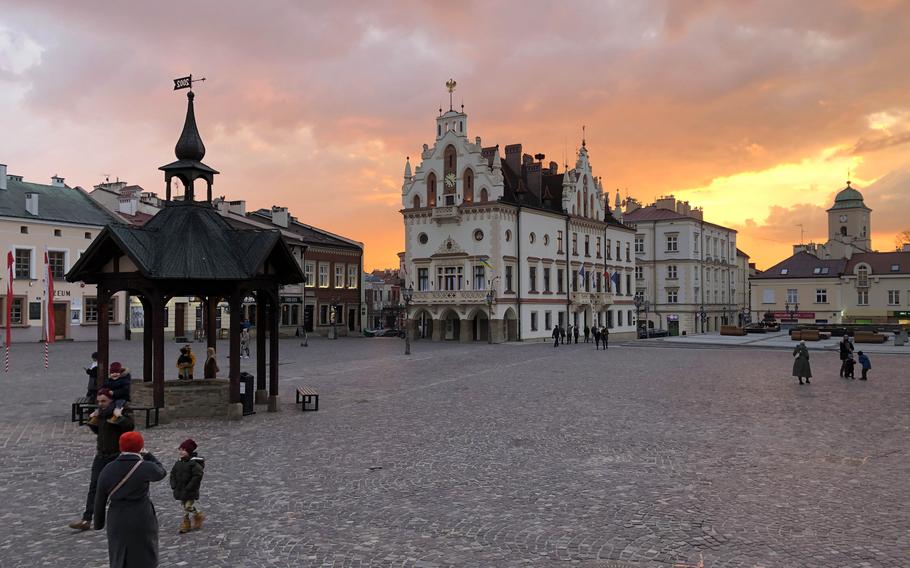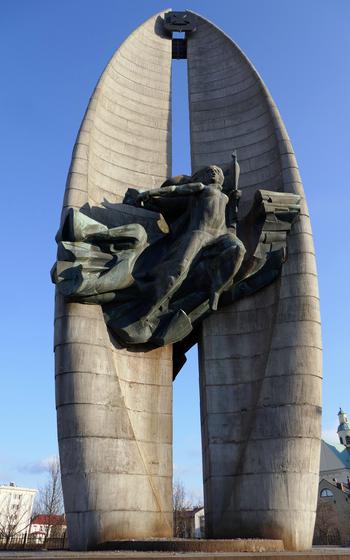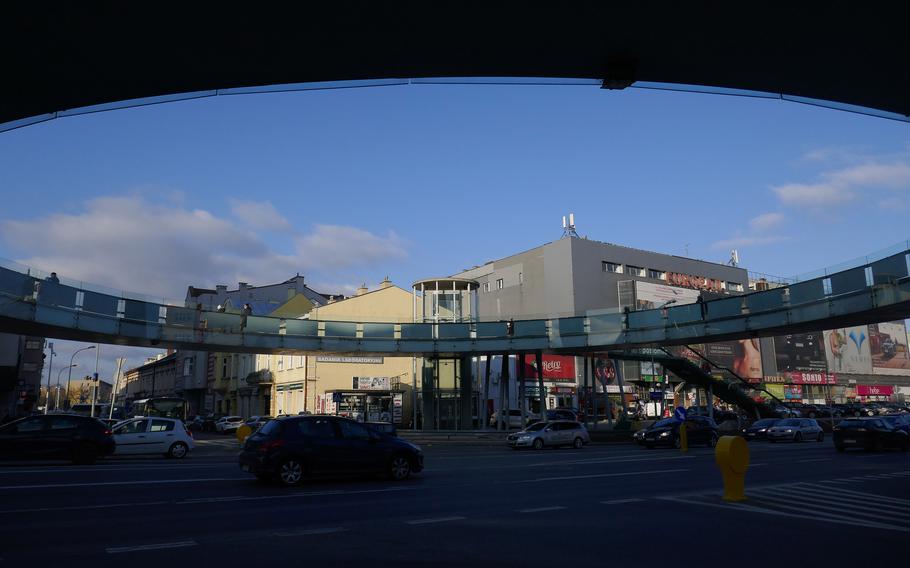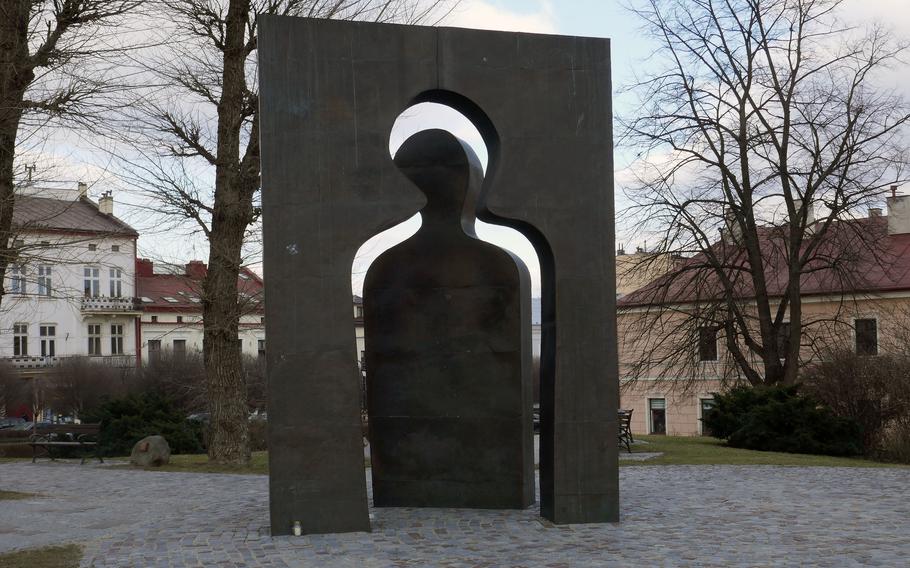
The sun sets behind the Ratusz, or town hall, on Rzeszow, Polands Rynek, or market square. The town hall was built in the late 16th century. (Michael Abrams/Stars and Stripes)
Outside Poland, most people probably were unfamiliar with Rzeszow, a medium-sized city in southeastern Poland that has been in the news lately because of the outbreak of a new war in Europe.
Thousands of refugees passed through following the Feb. 24 start of Russia’s full-scale invasion of Ukraine. The U.S. Army’s 82nd Airborne Division troops deployed nearby and President Joe Biden visited in late March.
Rzeszow is an old city, first inhabited in the 10th century and granted town rights in 1354 by Polish King Casimir III the Great.
Today the area has about 200,000 inhabitants and the trappings of modernity, such as thriving information technology and aviation industries.
While it might not boast the flair of Krakow or the glitter of Warsaw, the city is worth a visit if you are in southeastern Poland.
Its two most distinctive sights are the old town Market Square, which houses City Hall, and the Monument to the Revolutionary Action.
The former is a large cobblestone square lined with restaurants, cafes and stores. The ornate City Hall was built in the late 16th century.
The latter, also called the Monument to the Revolutionary Struggle, was erected in 1974 as a communist recollection of World War II fighting in the area.
Two stylized laurel leaves rise about 125 feet into the Polish sky, towering over a busy city intersection. A giant Nike, the goddess of victory, adorns one side of the monument, a sculpture featuring a soldier, a worker and a peasant the other.

The Monument to the Revolutionary Action in Rzeszow, Poland. Also called the Monument to the Revolutionary Struggle, it was designed by Marian Konieczny and erected in 1974 as a communist monument to World War II fighting in the area. Seen here is Nike, the goddess of victory. On the other side is a sculpture of a soldier, a worker and a peasant. (Michael Abrams/Stars and Stripes)
Despite past talk of tearing it down because of its communist connection, the giant memento survives.
Nearby, and worth walking around for the fun of it, is one of the few circular footbridges in Europe. It crosses over the busy intersection of Pilsudskiego and Grunwaldzka streets in downtown Rzeszow.

This bridge, built over the busy intersection of Pilsudskiego and Grunwaldzka Streets in Rzeszow, Poland, is one of the few circular footbridges in Europe. (Michael Abrams/Stars and Stripes)
Back in the old town, stroll down 3 Maja Street, a pedestrian thoroughfare lined with shops and restaurants. At one end is the parish church of St. Stanislaus and St. Wojciech. Its oldest part dates to the early 15th century.
Under Market Square are the Rzeszow Cellars, running more than 1,200 feet through 25 basements.
On Cichociemnych Square is an interesting sculpture called "Przejscie 2001," meaning “Transition 2001.” According to the artist, it symbolizes the arrival of a new era and the crossing of the border between life and death.

In the center of Rzeszow, Polands Cichociemnych Square is this interesting sculpture by local artist Jozef Szajna called "Przejscie 2001" or Transition 2001. The square is named for the elite World War II exiled Polish army special operations paratroopers, trained in Great Britain to operate in occupied Poland. Circling the monument are plaques with the names of people deported to Auschwitz. (Michael Abrams/Stars and Stripes)
The square is named for the elite exiled Polish army paratroopers who were trained in Great Britain during World War II to operate in occupied Poland. Circling the monument are plaques with the names of people deported to Auschwitz.
Rzeszow had a large Jewish population before the Holocaust, and two former synagogues can still be seen.
The Old Town Synagogue was built at the turn of the 17th century and is now part of the state archives. The New Town Synagogue, which was burned down by the Nazis as they retreated, was rebuilt and is now used by Polish artists associations.
On the edge of the old town, overlooking the Wislok River, is Lubomirski Castle. First built at the end of the 16th century, the complex has gone through many changes since.
Today’s version was built around the turn of 20th century, when it was used as a district court.
Across the river, modern Rzeszow rises, full of glittery new apartment and office buildings made of glass and concrete. Nearby are the university and a giant temple to consumerism, the Millennium Hall mall.
Rzeszow is about a nine-hour drive from Grafenwoehr, or a short direct flight from London Stansted airport. LOT Polish airlines flies there regularly. Lodging is tight because of the refugee situation, so check ahead of time if you go.